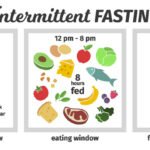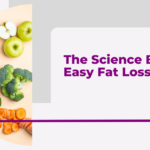Intermittent fasting (IF) has become one of the most popular health trends, promising benefits from weight loss to longevity. But with so much hype, it’s hard to separate fact from fiction.
This guide breaks down the science-backed benefits, common myths, and practical tips to help you decide if IF is right for you.

What Is Intermittent Fasting?
Intermittent fasting isn’t a diet—it’s an eating pattern that cycles between periods of eating and fasting.
Popular IF Methods:
✔ 16/8 Method – Fast for 16 hours, eat within an 8-hour window (e.g., 12 PM–8 PM)
✔ 5:2 Diet – Eat normally for 5 days, restrict calories (~500-600) for 2 non-consecutive days
✔ Eat-Stop-Eat – 24-hour fast, 1-2 times per week
Science-Backed Benefits of Intermittent Fasting
1. Promotes Weight Loss & Fat Burning
- Lowers insulin levels, increasing fat breakdown
- Boosts metabolism by 3-14% (short-term)
2. Supports Cellular Repair (Autophagy)
- Fasting triggers autophagy, where cells remove damaged components—linked to anti-aging & disease prevention
3. May Improve Heart Health
- Reduces LDL cholesterol, blood pressure, and inflammation
4. Could Enhance Brain Function
- Increases BDNF, a protein that supports brain health and may protect against Alzheimer’s
5. Helps Regulate Blood Sugar
- Lowers insulin resistance, reducing type 2 diabetes risk
Common Intermittent Fasting Myths Debunked
❌ Myth 1: “Fasting Slows Your Metabolism”
✅ Truth: Short-term fasting boosts metabolism, while long-term starvation slows it.
❌ Myth 2: “You’ll Lose Muscle Mass”
✅ Truth: IF preserves muscle better than standard calorie restriction, especially with protein intake & strength training.
❌ Myth 3: “Skipping Breakfast Is Unhealthy”
✅ Truth: Meal timing is personal. IF works whether your eating window is early or late.
❌ Myth 4: “Fasting Means No Calories at All”
✅ Truth: Black coffee, tea, and water are allowed (and help curb hunger).
❌ Myth 5: “Everyone Should Do IF”
✅ Truth: IF isn’t for everyone—pregnant women, those with eating disorders, or certain medical conditions should avoid it.
Who Should Avoid Intermittent Fasting?
🚫 People with a history of eating disorders
🚫 Pregnant or breastfeeding women
🚫 Those with diabetes or blood sugar issues (unless supervised by a doctor)
🚫 Underweight individuals
How to Start Intermittent Fasting (Safely)
1. Choose the Right Method for Your Lifestyle
- Beginners: Try 12-hour fasts (e.g., 8 PM–8 AM), then increase gradually
2. Stay Hydrated
- Drink water, herbal tea, or black coffee during fasting
3. Eat Nutrient-Dense Meals
- Focus on protein, healthy fats, and fiber to stay full
4. Listen to Your Body
- If you feel dizzy or exhausted, adjust your fasting window
5. Combine with Exercise (Smartly)
- Light workouts are fine during fasts; save intense training for fed states
Sample 16/8 Fasting Schedule
| Time | Activity |
|---|---|
| 7 AM | Black coffee/tea |
| 12 PM | First meal (high-protein) |
| 3 PM | Healthy snack (nuts, yogurt) |
| 7 PM | Last meal (balanced) |
| 8 PM–12 PM | Fasting (water/herbal tea only) |
Final Thoughts
Intermittent fasting can be a powerful tool for weight loss, metabolic health, and longevity—but it’s not a magic fix. Success depends on what you eat during your feeding window and how well your body adapts.
Want to try IF? Start with a 12-hour fast and see how you feel!









